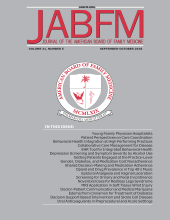Abstract
Introduction: Access to high-quality health care is a crucial social determinant of health. We describe the implementation of an “expanded medical home” partnering a primary care practice (the Ypsilanti Health Center [YHC]) with local school-based health centers (the Regional Alliance for Healthy Schools [RAHS]), and to assess whether this model improves access to and quality of care for shared patients.
Methods: Using the Consolidated Framework for Implementation Research, we define the steps in, barriers to, and facilitating factors in implementing the expanded medical home model. Visits and quality measures were assessed for patients seen by YHC only versus YHC/RAHS at baseline and during the intervention.
Results: At baseline, patients seen at YHC/RAHS had higher compliance with most quality metrics compared with those seen at YHC only. The proportion of shared patients significantly increased because of the intervention (P < .001). Overall, patients seen in the expanded medical home had a higher likelihood of receiving quality metric services than patients in YHC only (odds ratio, 1.8; 95% confidence interval, 1.57–2.05) across all measures.
Conclusions: Thoughtful and intentional implementation of an expanded medical home partnership between primary care physicians and school-based health centers increases the number of shared high-risk adolescent patients. Shared patients have improved compliance with quality measures, which may lead to long-term improved health equity.







